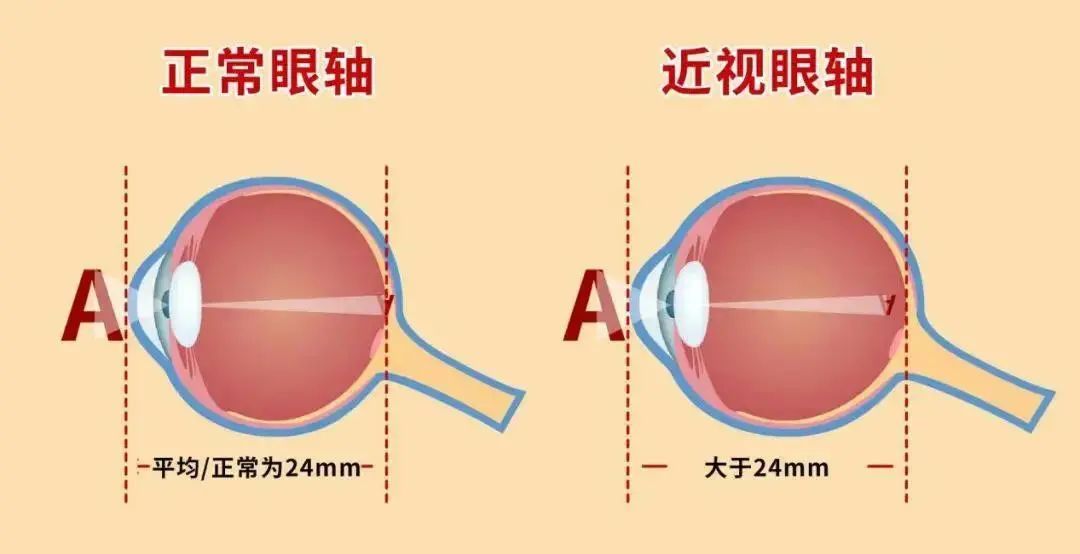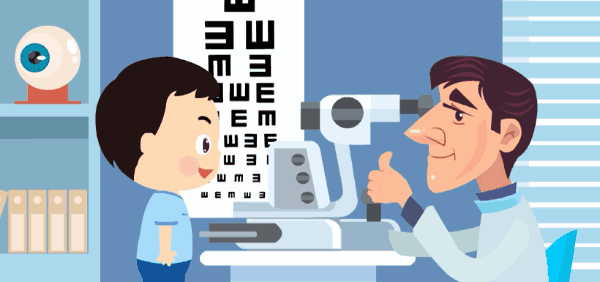As a parent of a young child
In addition to worrying about my baby growing up
I’m worried that my baby is myopic!
Wearing glasses is inconvenient and unattractive!
According to effective statistics
4 out of 10 elementary school students are nearsighted
Adolescent myopia situation
There is a trend of high incidence and younger age in general
The overall myopia rate among adolescents is as high as 52.7%
The overall myopia rate of children and adolescents in my country is 52.7%,
Among them, 14.3% of 6-year-olds, 35.6% of elementary school students, 71.1% of junior high school students, and 80.5% of high school students.
Almost 10% of myopic students are highly myopic!
High myopia can lead to serious complications, such as
Cataract, retinal detachment and glaucoma, etc.

Your nearsightedness may be related to the environment
Everyone who is short-sighted must have thought about how they were short-sighted back then!
Most people think so
Play on your phone!
But more and more evidence shows that among the three factors (genetics, environment, nutrition) that induce myopia,
The environment plays the biggest role.
Environment
Outdoor activities are effective in preventing myopia.
Children can prevent myopia by spending 2-3 hours a day outdoors or more than 10 hours a week.
Note that the focus of “outdoor activities” is not “activity” but “outdoors”.
Mainly because there is plenty of light outdoors!
The best light intensity for children is 3000~10000lux.
This is the daytime outdoor brightness in cloudy weather.
You can prevent myopia even if you don’t do anything outdoors!

How can myopia be prevented with sufficient light?
One is that the light makes the pupil narrow, the depth of field is deepened, and the blur is reduced, so it can inhibit the occurrence of myopia;
The second is that light stimulates the retina to release dopamine, a neurotransmitter that prevents the eyeball from elongating during development, allowing light to focus on the retina.
If a child is exposed to an eye environment with insufficient light and uneven light for a long time, it will affect the secretion of dopamine on the retina;
And dopamine is a substance that is currently believed to hinder the growth of the eye axis. Once the eye axis grows, myopia will deepen.

Can outdoor activities prevent the rise of myopic children?
We all know that prolonged close eye use is a high risk factor for the occurrence and progression of myopia.
The increase in outdoor activities can also reduce the time spent using the eyes at close range, which also has the effect of preventing and controlling myopia.
For children with myopia, while scientific and standardized medical intervention, good eye habits cannot be relaxed.

Prevent myopia, pay attention to these points
1
Established a refractive development file since childhood
Parents should take the initiative to conduct a health checkup for their children
Vision Screening .
Establish a refractive development file, monitor vision and refractive development regularly every 3 to 6 months after the age of 3, and seek medical attention in time if any abnormality is found.
2
Axial detection is necessary
If the child’s eye axis is in
The growth rate is very fast in a short period of time, which means that there may be a trend of myopia.
Primary school students should do it every year
2~4 times
Vision test.
3
Make good habits
Pay attention to standard reading and writing postures and habits.
Ensure adequate sleep time of more than 10 hours every day; pay attention to a balanced diet.
Keep in mind the “20-20-20” principle,
Use your eyes at close range for 20 minutes, and focus on looking at distant objects 20 feet (6 meters) away for 20 seconds to relax your eyes.

References:
1. Resnikoff S, Pascolini D, Mariotti S P, et al. Global magnitude of visual impairment caused by uncorrected refractive errors in 2004[J]. Bulletin of the World Health Organization, 2008, 86: 63-70.
2. Heritability of refractive error and ocular biometrics: the Genes in Myopia (GEM) twin study.
3. Saw S M, Chua W H, Hong C Y, et al. Nearwork in early-onset myopia[J]. Investigative ophthalmology & visual science, 2002, 43(2): 332-339.
4. Ip JM, Saw SM, Rose KA, et al. Role of near work in myopia: findings in a sample of Australian school children[J]. Investigative ophthalmology & visual science, 2008, 49(7): 2903-2910.
5. Dong Yanhui, Liu Huibin, Wang Zhenghe, et al. Epidemiological status and changing trend of myopia in children and adolescents aged 7-18 years in China from 2005 to 2014 [J]. Chinese Journal of Preventive Medicine, 2017, 51(4):285-289.
Source: Department of Ophthalmology, Run Run Shaw Hospital, Zhejiang University